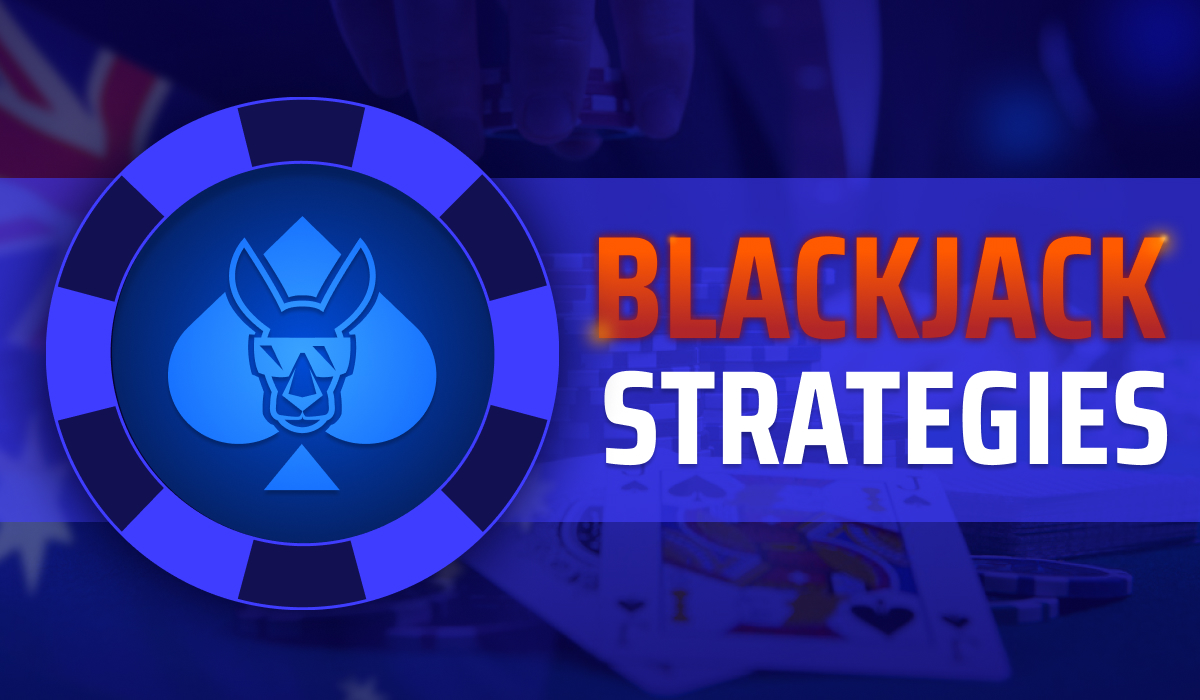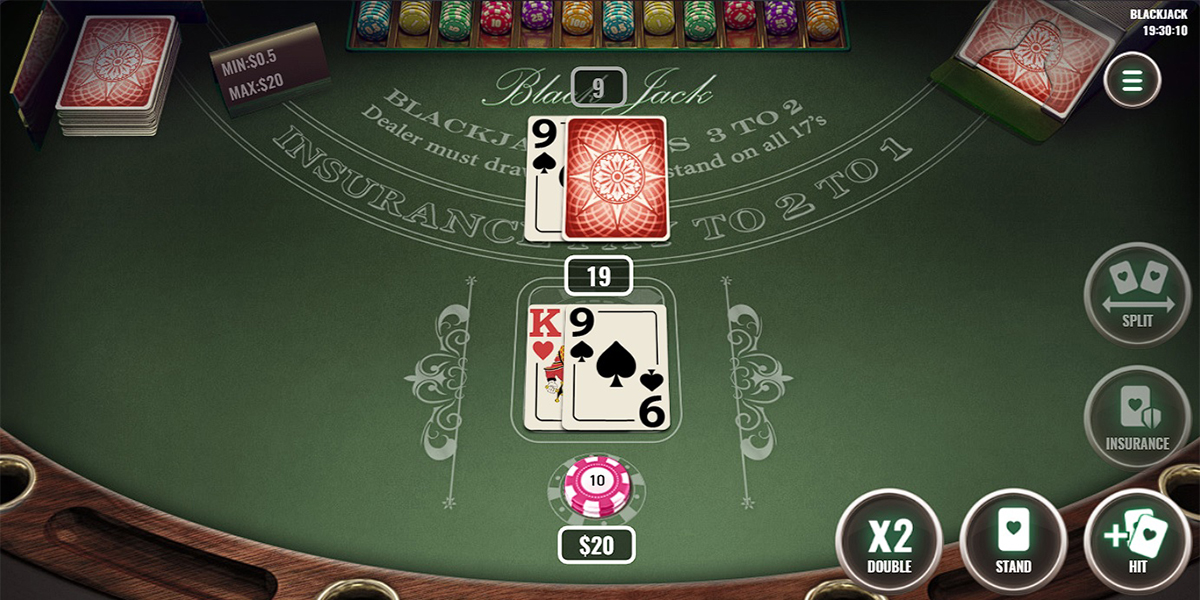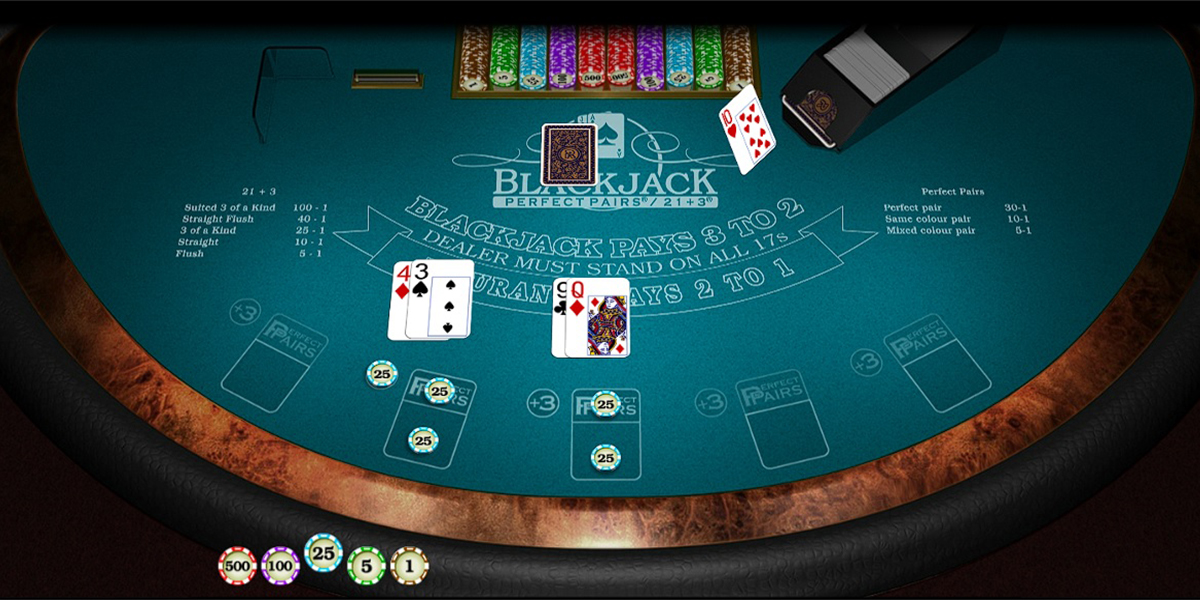Basic Blackjack Strategy – How to Increase Your Winning Chances Playing Blackjack

At its most basic, blackjack is a simple card game. You play to beat the dealer (house), and for that, you need a hand as close to 21, or 21, to win.
But following the rules with no foresight is a recipe for losing. Knowing the best time to hit, double down, or stand, among other possible actions, is vital to building a blackjack strategy that works and refining it in the long run.
In this guide, we will outline all the most important aspects of the game you need to get right every time to get the highest possible winning chance in every situation.
Blackjack Glossary and Gameplay
Let’s start with the basics. The fundamentals of practising a viable blackjack strategy do not start with the strategy itself but with understanding the game.
This guide’s aim is to offer a handbook in basic blackjack strategy for beginners, and for that, you must know the few fundamental terms and actions you’ll often rotate in your sessions.
- Hit – When you “hit,” you get another card from the dealer.
- Stand – You end your turn without taking an extra card.
- Split – You split your single hand into two hands if you have two same-value cards (two 4s, two 3s, etc.).
- Double down – You can double your first bet on any two cards. You get an additional card but can’t hit again.
- Hard hand – Does not include an Ace or if it does, it has a value of 1.
- Soft hand – A hand where the Ace counts as 1 or 11.
- DAS – Is short for ‘double after split,’ a rule allowed in some blackjack games.
- Go bust – have a hand that amounts to over 21, in which case you lose even if the dealer goes bust.
- Insurance – Allows you to place an insurance bet if the dealer shows an Ace and you think they will hit blackjack.
The Step-by-Step of Playing Blackjack
Below is a quick step-by-step guide on how to play blackjack at online or land-based casinos:
- Place your initial bet before receiving any cards.
- You’ll be dealt two cards, face up.
- Hit or stand (or double down).
- The dealer shows the face-down card and takes action.

After that final step, either a winner is determined, or the round ends in a ‘push,’ where the dealer and you have the same-value hand.
Top Blackjack Strategies for Beginners
There are instances in blackjack when relative to your and the dealer’s cards, one move is preferable to another. Here are a few tips on how to strategise when playing at online casinos in Australia.
Hit Strategy
In blackjack, you should always hit if:
- You hold a hard 12, and the dealer’s upcard is 2 or 3.
- You hold a soft 18 (Ace and 7), if the dealer’s card is an Ace, 10, or 9.
- You hold pairs of 2s or 3s, and the dealer’s upcard is also 2 or 3, but only if DAS is not allowed. If allowed, you should double after splitting.
These are only a few important guiding strategies for playing a good hand. You should always hit if you have a combined value of 11 or under. Another instance to think about hitting is if the dealer has a 7 or a higher card and you have less than 17.
Stand Strategy
Standing is a passive move, but there are a handful of instances where it is the right strategic decision.
Generally speaking, standing is smart if the combined value of your hand is a hard 17 or a larger value. The probability of getting one of the low-value cards to improve your hand if you hit is low, and splitting is pretty much a losing move.
Standing is also worth considering if you hold a hard 12 or a higher hand and the dealer’s face-up card is a 5 or a 6, which often ends in the dealer busting.
If you’re dealt a pair of 9s, splitting is probably the most appealing move, but not if the dealer shows a 7. Given the prevalence of 10-value cards in the deck, there is a strong chance the dealer will get a 10.
Double Down Strategy
There are several blackjack strategies that work when you double your initial bet and get the additional card. You should double down when:
- You hold a hard 11 against any dealer face-up card (applies for single-deck games).
- You have a total of 10; even better if the dealer shows a 9 or under.
- You hold anything from soft 13(A-2) through soft 18(A-7) and the dealer shows a 5 or 6 (or even 4 with double-deck games).
Doubling down can be your boon or bane, and the only way for it to become a risk is if you bet on emotion and double down with the goal of compensating for earlier losses.
Just follow our tips for when this is the right approach and when it seems like it is, but it’s not, such as when holding a hard 12 or a higher hand.
When (not) to Split Strategy
Splitting is another feasible blackjack strategy for beginners. However, there are rules that indicate splitting is most likely to work only with a handful of pairs.
The rule of thumb is you should always split a pair of 8s and aces, no matter what the dealer shows. Players logically hold on to the hard 16 if the dealer shows a 10, Ace, or 9, but the advantage move here is to split unless surrender is an option.
Another established rule in blackjack strategy charts is to avoid splitting a pair of 10s. This is arguably the best hand you can get apart from a natural 21, and while splitting is also favourable, you are advised to hold onto the hand, which offers a huge 83% chance of winning.
Don’t split a pair of 9s if the dealer has a 7 face-up card. This move offers a greater probability the dealer will have a combined value of 17 or under to your 18.
Additional Blackjack Quick Tips
Here are a few more quick tips to help you with your blackjack strategy:
- Avoid doubling down on a hard 11 if the dealer’s face-up card is an Ace.
- Never double down on a pair of 8s in multi-deck blackjack games.
- Double down instead of hitting when holding a pair of 8s in single-deck games.
- Never split pairs of 5s or 10s. Either hit on the pair of 5s (hard 10), or stand on the pair of 10s.
- Surrender (if possible) if you hold a hard 16 (10-6, 7-9, 8-8) and the dealer has an Ace, 10, or 9 upcard. Split the 8s if surrender is not allowed.
- Avoid insurance bets and side bets like Super Sevens, 21+3, or Easy Match as they raise the house edge.
How Does Blackjack Strategy Change With Multi-Deck Games?
You might need to readjust some strategies depending on whether you’re playing single- or multi-deck blackjack. Even though multi-deck games create slightly more unfavourable odds for you as a player, there are only a few important exceptions:
- Double down a hard 11 in single-deck games (regardless of the dealer’s face-up card), but hit in multi-deck if the dealer shows an Ace.
- Never double down on a combined value of 8 in multi-deck blackjack.
- If the dealer shows a 2 against your hard nine, double down in single-deck and hit in multi-deck.
- In multi-deck, hit if you have a hard 8 against the dealer’s 5 or 6, but split if the hard 8 is a pair of 4s.
Blackjack Side Bets & Whether You Should Take Them

Many online blackjack variants offer side bets (an additional bet that doesn’t have to do anything with the original outcome of the blackjack hand). Here are a few popular ones.
21+3
This common side bet is based on different card combinations from your two cards and the dealer’s upcard.
Some of the winning combinations are borrowed from poker, such as whether these three cards will form a Flush (3 suited cards, pays 5:1); Straight (sequenced cards like 7, 8, and 9, regardless of the suit; three of a kind, and more combinations.
Super Sevens
You hope for at least one of your first 2 cards to be a 7, and get another 7 if you hit. Depending on the suit and number of 7s, the payouts range from 3:1 to 500:1 or even 5000:1 (for three suited 7s).
Royal Match
It pays at 10:1 in single-deck blackjack if you draw a suited queen and king and 25:1 in multi-deck games for the same combination. You can also win at 3:1 or 5:2 – depending on whether it’s a single- or multi-deck game – for an Easy Match i.e. two suited cards irrespective of their rank.
Over/Under 13
You bet if the combined sum of the two cards you are dealt adds up to under or over 13. If the value is 13, you lose. This side wager usually pays at 10:1 odds.
Insurance Bet
Some blackjack tables online allow you to protect your hand and break even if the dealer’s upcard is an Ace and you fear they might hit blackjack.
Perfect Pairs
Bet whether to get a mixed (same rank, different colour), coloured (same rank and colour, different suit), or a perfect pair (same rank, suit, and colour). The perfect pairs combo usually pays the most, approximately 30:1.
Pros and Cons of Blackjack Side Bets
Side bets offer considerably longer odds, and the potential wins are tempting. From relatively modest payouts between 3:1 and 10:1 to 30:1 and up to 500:1 or 5000:1. The benefits are clear.
However, the true appeal of blackjack is its low house edge, usually under 1%. Side bets increase the edge significantly. Depending on the bet, the house edge can rise to around 4% or up to 10% or higher.
The general rule is to avoid using side bets as part of any long-term blackjack strategy. You can place a side bet every once in a while when you can afford to test your luck. Otherwise, steer clear as you might as well play pokies and buy the bonus round!
Conclusion: Work on Your Blackjack Strategy!
You can learn all the strategies and rules of blackjack, but you still might not have an idea what to do when the dealer shows a 9 and you hold a pair of 8s. The only way to develop a blackjack strategy that works is to start playing.
You can find a trusted online casino that offers free RNG blackjack in demo mode if you’re a beginner, or go for a low-deposit casino site and start playing for real for as little as AU$10 or AU$20.
We also advise you to find and learn different blackjack charts. Although confusing, they offer a quick insight into the best moves relevant to what you and the dealer are holding.
As a final tip, it’s a good idea to try both single- and multi-deck blackjack and see how different strategies apply to these games and perhaps implement some of our tips. Our best advice is you pick one or two blackjack variants you like best and learn their basics (bets, payouts, special rules) before you start putting your strategy into practice.
Thanks for reading!


